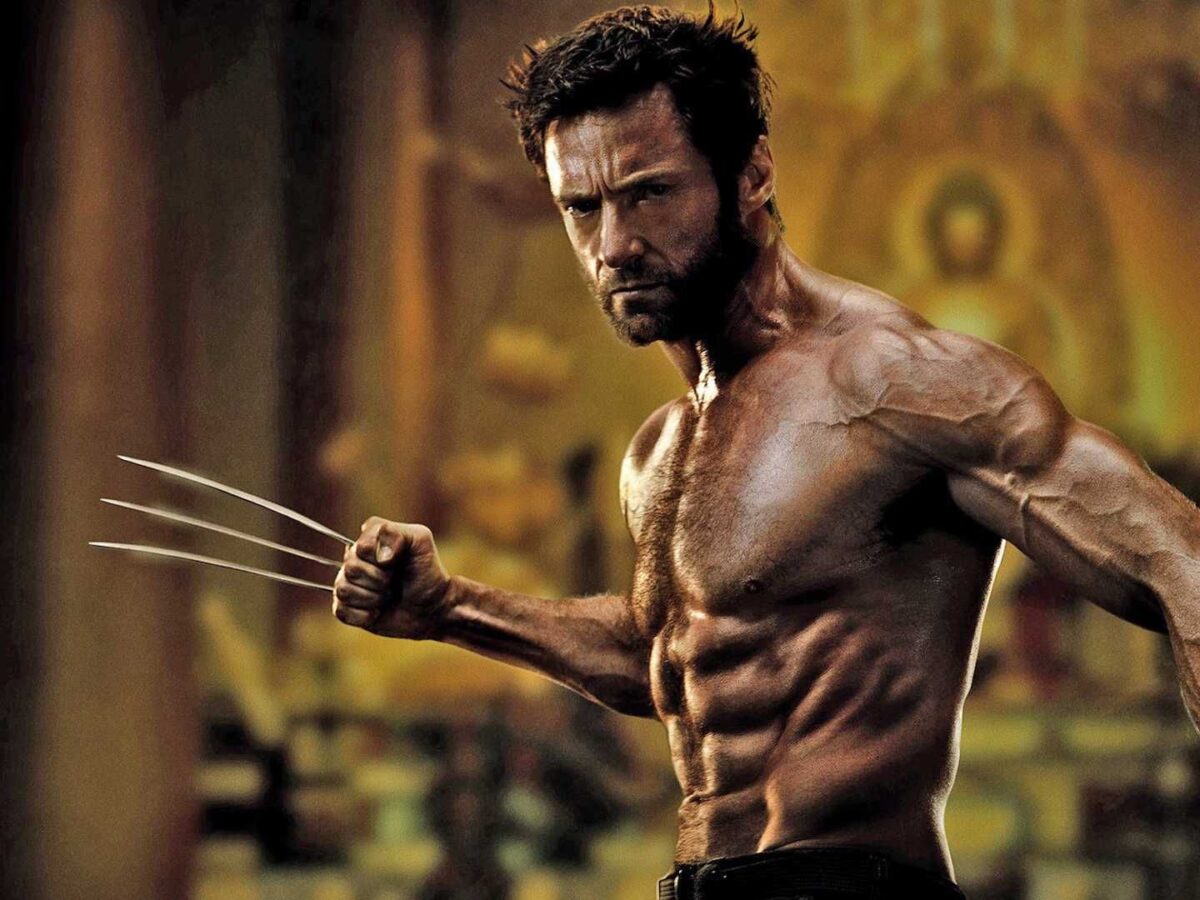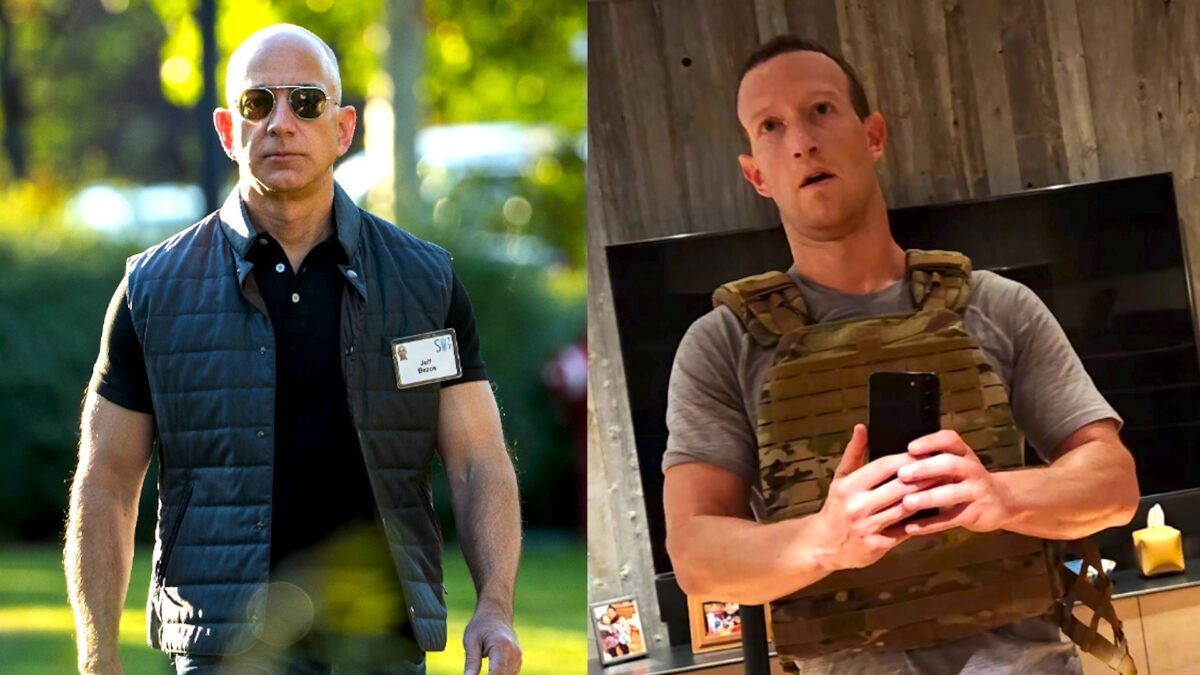A peculiar trend has emerged among the highest-flying billionaires that Silicon Valley has to offer: neither Amazon founder Jeff Bezos nor Facebook and Meta boss Mark Zuckerberg can stop showing off their newly ballooned muscles. But what does this change from scrawn to brawn mean for the male body ideal writ large, and why the sudden change of pace?
For as long as this writer can remember, the silver screen has been adorned by blokes with bulging biceps, pulsing pecs, and devilish delts. From Zac Efron’s wrestle-ready bulk, Tom Hardy’s Bane biceps, and Ryan Reynolds getting ripped, we’ve always been across movie star muscle-ups here at DMARGE.
But now, it seems this body ideal has trickled down to what we might generously call our B-list celebrities: the super-rich, super-famous, and super-vain. Bezos’ transformation from run-of-the-mill tech nerd to discount Vin Diesel has been mirrored by Mark Zuckerberg, who recently undertook the gruelling “Murph Challenge” and won medals at a Brazilian jiu-jitsu tournament.
WATCH: Bigger biceps haven’t been Bezos’ only upscaling effort in recent months…
But why has this trend — which seems to be rapidly spreading across the so-called CEO class — emerged with such veracity? A number of factors are at play, one of which is Silicon Valley’s obsession with biohacking and body optimisation, perfectly embodied last month in Bryan Johnson’s “blood boy” fiasco.
Unsurprisingly, social media has been another huge factor, driving a wider cultural fixation on appearance across genders but, particularly in men, leading to a much greater focus on muscle mass and definition as markers of health, attractiveness, and even financial success. Even children have begun to internalise this ideal, with a 2018 study showing that both boys and girls preferred hyper-muscular male action figures to skinnier alternatives…
This point on action figures reflects the changing on-screen male bodies we’ve gotten used to seeing: Hugh Jackman’s tenure as the X-Men’s Wolverine is a perfect case study. In his first outing during the year 2000, Jackman looked fit by most bloke’s standards. By the time 2017’s Logan rolls around, despite being almost twenty years older Jackman looks significantly bigger, leaner, and meaner. The bar for male buffness is skyrocketing.

While bodybuilders, PTs, and fitness influencers rejoice that their hobby of choice is now in the cultural ascendency, it’s important that the rest of us stop to ask whether this is a good thing in the first place. If we take a look at the rapidly rising figures around muscle dysmorphia — a subset of body dysmorphic disorder — the answer could be a resounding ‘no’…
A 2019 study shows that this condition is on the rise, with 22% of men aged 18-24 reporting muscularity-oriented disordered eating, but this isn’t the only detrimental symptom the condition can illicit: obsessive behaviours, depression, social isolation, and the use of illegal substances like steroids to achieve the desired physique are all common.
In the longer-term, muscle dysmorphia can have serious physical and mental health risks, including heart disease, kidney problems, liver damage, aggression, and paranoia. The latter of which contributes to an ongoing silence around the condition, with men failing to recognise or report their issues. But what does this have to do with Bezos and Zuckerberg getting in the gym? And should they be blamed for lesser mortals struggling with their body image?
In my opinion, yes, they can be, because their buffing-up represents a pincer movement on the rest of us: not only do Bezos and Zuckerberg have a much easier time getting jacked than the rest of us because of the massive amounts of time, money, and manpower available to them, but they made that money by creating and scaling the very same tech that propagates body issues amongst men worldwide.
Mark Zuckerberg won his first Brazilian Jiu Jitsu tournament pic.twitter.com/us8vmTTEZ5
— Dexerto (@Dexerto) May 7, 2023
Zuckerberg’s platforms — and the algorithm therein — force images of bodybuilders into your feed, leading you to feel terrible about your body. In response, you consume more and more content, hoping to get fitter, whilst spending money on Bezos’ platform to buy all the supplements, gym gear, and dumbells your heart desires. All the meanwhile, your time and money are being sucked out of you, whilst the tech titans line their pockets and book in with their superstar PTs…
Don’t get me wrong, Bezos and Zuckerberg deserve some praise for their body and lifestyle transformations. Even with all the money in the world, these things require willpower and discipline to attain. Nevertheless, we have to ask the same question of them that we must always ask of the superrich: who suffers so that they can live the good life?
When it comes to bodies and body image, the answer might be regular blokes around the world. It seems the only gains being made here are in their wallets, not our well-being. It’s time we flexed our own power and redefined what truly matters: health, self-acceptance, and resisting the influence of Silicon Valley’s superficial standards.
